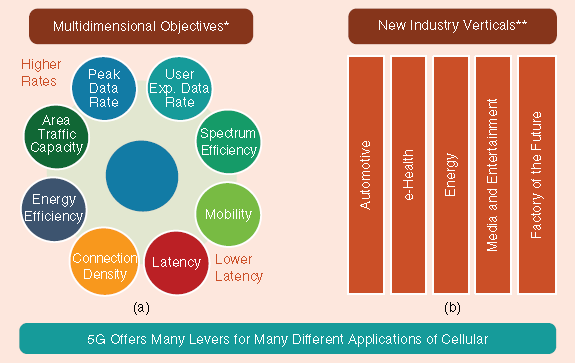Going Toward 6G


The cellular industry has just reached another milestone with the development of 5G wireless communication technology. While research in 5G is a core part of the Signal Processing for Communications and Networking (SPCOM) technical committee, it may also be found in several other technical areas. As this is also my core expertise, I have decided to discuss, in this editorial, the expected goals that 5G has and has not achieved and what might be coming in 6G cellular networks.
Cellular communication systems are constantly evolving, with new releases every one to two years. Roughly every 10 years, one of the releases is branded as a new generation. Usually, the new generation standard has been designed to achieve some significant performance improvements. Many different industries have made use of cellular communication in the past, but 5G also considered the requirements of devices associated to the different verticals. From an automobile to a smart meter or an industrial robot. A main motivation for looking at applications of cellular beyond wireless Internet access is alternative revenue sources. To meet the different requirements for new devices, changes are made in all aspects of the cellular system, including the physical layer waveforms and the higher layer networking.
In the editorial Going Toward 6G by Robert W. Heath published in IEEE Signal Processing Magazine in May 2019, describe three promising directions for 6G, building on observations about limitations of 5G. First, how the physical layer needs to support higher bandwidths, higher carriers, yet at lower powers. Second, how the industry verticals from Figure 1(b) were not completely served and how 6G may be designed around these areas. Finally, the potential role that machine learning may play in 6G in a more integrated fashion than done before.
Robert W. Heath hopes that you can see the potential for signal processing in each of the areas that he has outlined. From his perspective, our work in diverse areas of signal processing have the chance for significant impact on 6G and society at large. Maybe now is the time to have a special issue of IEEE SPM on the topic of beyond 5G communications.

